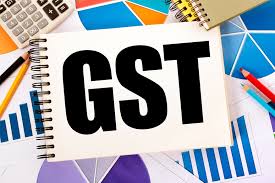How India is leading by example with its faceless E-assessment system for income tax
over the past few years, one of the key focus areas of the Union government reforming taxes initiating from GST as a great transformation in indirect taxes, waving towards Direct taxes in Assessment Procedure is by introducing a faceless e-assessment system for income tax. In fact, India is one of the few countries in the world to adopt such a system. E-assessment will bring an epitome shift in taxation by expelling the human touch in the tax assessment of the Income Tax system. Cases for scrutiny are transferred to assessment units in a random manner, using automated algorithms which are generated by computer. Then, notices are issued electronically by a Central Centre, the National e-Assessment Centre, without disclosing the identity of the assessment officer. The NeAC is the single point of faceless contact between the taxpayer and the I-T Department and follows a team-based approach.
In short, this scheme is a manner of conducting trials in an automated way that involves dynamic authority. This scheme removes the unwanted methods that appear when there is a chance for individual biases and subjective judgment. The anonymous nature of the method can discourage high-pitched assessments and result in objective, truthful and simply assessment orders, which may be finalised in a very short time. The ministry of finance has notified a revised Form 26AS, which has additional details on taxpayers’ high-value financial transactions, like cash deposits/withdrawals and property purchases undertaken during a financial year. This can facilitate validation of all offered data facilitating the seamless implementation of the primary section of the faceless assessment.
Under the new system, taxpayers won’t be needed to go to territorial jurisdiction tax officers or the I-T Department on receiving tax scrutiny or assessment notices, preclusive the necessity for face-to-face interactions. This can bring an end to any doable harassment of honest taxpayers. The system is additionally expected to evoke a considerable increase in trust within the system by creating the method transparent and taxpayer-friendly. The theme is about to evoke a hassle- and harassment-free faceless assessment for the honest taxpayers and can foster some non-adversarial & contributive tax surroundings.
Broadly, The Central cell shall serve a notice on the assessee specifying the issues for selection of his case for assessment. In response to that notice, the assessee may file his response within 15 days from the date of receipt of notice. NeAC would assign cases to specific assessment units through an automated allocation system, thus involving dynamic authority. At any stage where a modification prejudicial to the taxpayer is proposed, NeAC shall give opportunity of being heard to the taxpayer to explain its perspective before the judgement conclusion. This could include representation through video conferencing. Once the assessment is completed, the Central cell will transfer all electronic records to the authorised tax officer for penalty imposition, prosecution proceedings, recovery of demand, etc.
The most important aspect of new procedure is coverage of ‘Best judgement assessment’ in faceless Assessment Scheme. Earlier, best judgement assessment in cases of non-cooperating taxpayers could be done only by jurisdiction AO. Territorial AOs might someday be aware of taxpayers and contact/Convince them to get together with tax authorities to punctually complete the assessment proceedings, particularly in cases wherever taxpayers would miss the notices unknowingly. Now, even in those cases, wherever payer doesn’t abide by at intervals given timeframe, best judgement may be done beneath directions of NeAC, which can lead to adverse best judgement for taxpayers. Therefore it’s better for the sake of taxpayers to punctually fit notices given during this scheme.
Over the last few years, the Income Tax Department has undergone a revamp in its approach, from being just a revenue-collecting concern to becoming a more citizen-centric one. The faceless e-assessment system is another step in this direction and takes forward the government’s drive towards improving the taxpayers’ perspective towards IT- department by making available various functionalities online.
The system comes at a very apt time, wherein the digital nature of the process ensures continuity in period of the Covid-19 pandemic. If it gets implemented successfully, India can be an example for the rest of the world in leveraging technology for curbing undesirable practices and offering better services to its tax-paying citizens.
Download our App to get knowledge updates: https://play.google.com/store/apps/details?id=com.app.gstmitraa
Join Our Telegram Channel for more updates: https://t.me/praveengst




Comments
Post a Comment